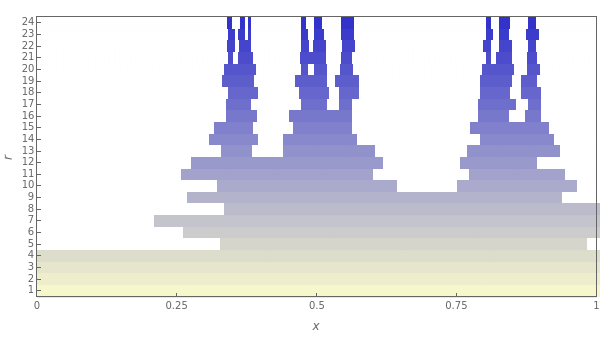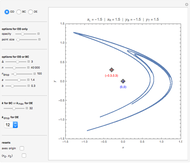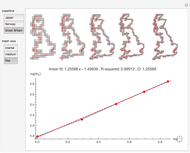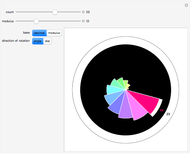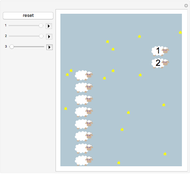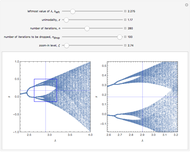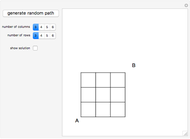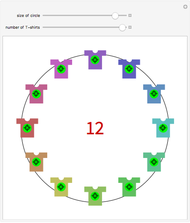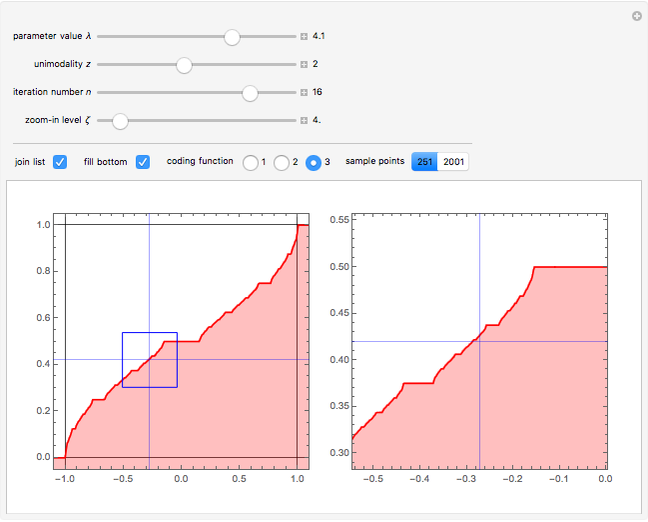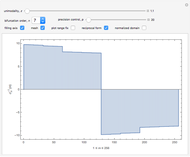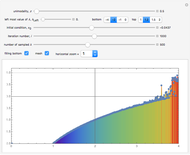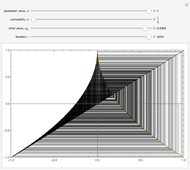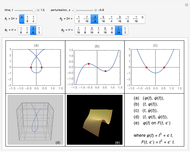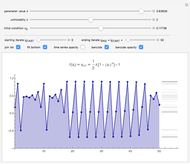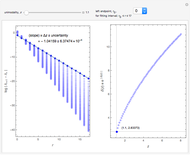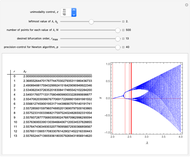Stack Diagram for 1D Box-Counting Steps

Requires a Wolfram Notebook System
Interact on desktop, mobile and cloud with the free Wolfram Player or other Wolfram Language products.
The box-counting dimension [1–4] can be defined as
[more]
Contributed by: Ki-Jung Moon (December 2013)
Open content licensed under CC BY-NC-SA
Snapshots
Details
Box counting is a method of gathering data for analyzing complex patterns by breaking a dataset, object, image, etc. into smaller and smaller pieces, typically "box" shaped, and analyzing the pieces at each smaller scale [1].
References
[1] Wikipedia. "Box Counting." (Feb 1, 2013) en.wikipedia.org/wiki/Box_counting.
[2] B. Mandelbrot, The Fractal Geometry of Nature, San Francisco: W. H. Freeman, 1982.
[3] H.-O. Peitgen, H. Jürgens, and D. Saupe, Chaos and Fractals: New Frontiers of Science, 2nd ed., New York: Springer, 2004.
[4] S. Wolfram, A New Kind of Science, Champaign, IL: Wolfram Media, 2002.
[5] R. May, "Simple Mathematical Models with Very Complicated Dynamics," Nature, 261(5560), 1976 pp. 459–467.
[6] M. J. Feigenbaum, "Quantitative Universality for a Class of Non-Linear Transformations," Journal of Statistical Physics, 19, 1978 pp. 25–52.
[7] M. J. Feigenbaum, "The Universal Metric Properties of Nonlinear Transformations," Journal of Statistical Physics, 21, 1979 pp. 669–706.
Permanent Citation
